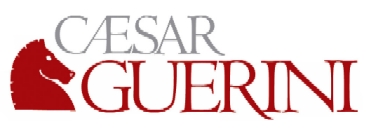Shotshell Bismuth Wars for 2020
Two
years ago, the shameless charlatans of Hevi-Shot were busy bashing
bismuth, only because they didn't sell it.
“Irregular-shaped
pellets reduce drag and increase tissue damage.” Hevi-Shot
goes on
to say, “But do you know the difference between HEVI-X and
other
products claiming to be in the same category?
Give
up? It’s tungsten.
Other
similar products use
bismuth, which—while similar to tungsten—is soft
and tends to
deform.” –
Hevi-Shot
To say that “irregular pellets reduce drag” is apparently part of the bizarro, comic book alternate universe of Hevi-Shot. Nothing could be further from the truth: perfectly spherical pellets are the best form-factor for shot. Hevi-Shot doesn't say that anymore, because, wonder of wonders, they now sell bismuth loads. Hevi-Shot has a nasty habit of spouting nonsense for no reason. Just like above, where Hevi-Shot states that bismuth is "similar to tungsten." A clever 3rd-grader knows that is stupidly ridiculous, in every way imaginable. I'm amazed the Hevi-Shot clown-car show is still in business. Only Hevi-Shot could claim that a "thicker basewad improves the reliability of semi-automatic shotguns." They still claim that real doozy of a whopper.
Hevi-Shot is, in my opinion, the most dishonest shotshell company the world has ever seen. They remain the sleazy carnival barkers of shotshell-land. The entire company is based on a lie: “HEVI-SHOT® is "heavier than lead"®.” What weighs more, a pound of lead or a pound of feathers? What Hevi-Shot apparently is clueless about is that the difference in shot materials is primarily density, not weight.
Hevi-Shot
continues with the same lies, stating "HEVI-X®
is now HEAVIER THAN BISMUTH™.” A pound of anything weighs exactly
the same as a pound of anything else. Fishing lures are designed to
catch more fisherman than they are fish, and lying about shot weight
is just another attempt to try to bag more hunters. Hevi-Shot has been the big losers in the density race for a
good long while, having nothing to compete with the old 15 g/cc Federal
Heavyweight, much less the industry-leading Tungsten Super Shot (18g/cc) loads
from Apex, Federal, and now Remington for 2020.
Bismuth has been on and off the market for years. Kent offers bismuth, BOSS has their copper-plated bismuth loads, and for 2020, Federal has introduced a line of bismuth shotshells as well. All I'm trying to do is to get back to the standard 1-1/4 oz. lead #5 levels of performance that have been ideal for ducks and mallards for the last century or so. While bismuth has had a brittleness problem, the latest 6-7% tin bismuth alloys are supposed to improve things.
Does bismuth do it? Ed Lowry covered bismuth back in
1993, see LowryBismuth1993.pdf.
Ed Lowry concluded his article by saying, "When
that happens, hunters will finally have have a substantially superior
alternative to the current mix of wildly unpopular and ballistically
inferior steel shot loads."
According to KPY Ballistics, bismuth doesn't quite get to lead #5 performance. The following are all 1-1/4 oz. 1350 fps loads.

For lead #5, 1-1/4 oz. is about 214 pellets, Bismuth #4 has about 10% less 40 yard penetration, and less pellets to form a pattern with: about 193. Bismuth #3 has slightly more penetration than lead #5, but the pellet count drops to only about 154. Sixty less pellets is a significant pattern penalty, but 10% less penetration is a significant performance penalty. At 30 yards, it won't matter much, but at 45 yards, you want both more pellets and more remaining penetration.
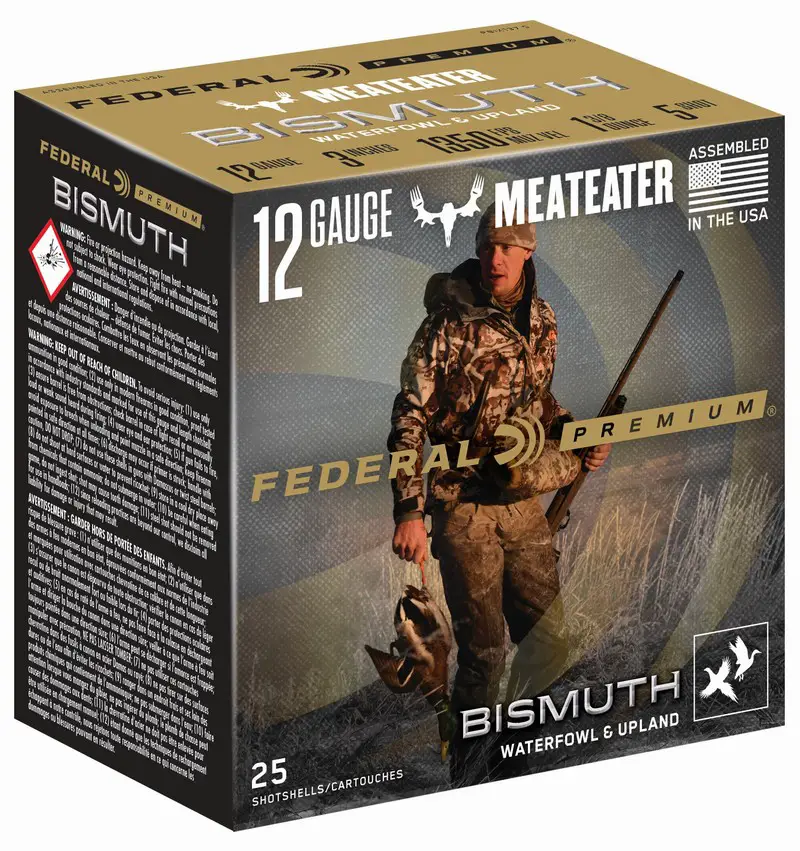
Unlike
lead, where 1-1/4 oz. 20 gauge payloads (and heavier) are common, not
so with bismuth, where 1-1/8 oz. loads are what BOSS and Federal are
loading. Federal says:
“Bring back the performance of lead—without the heavy metal. With high-quality 9.6 g/cc density bismuth pellets, Federal Premium® Bismuth payloads pattern and hit birds like traditional lead, providing more killing power at longer ranges. The material is also softer than tungsten and steel, allowing use in older shotguns as well as modern guns. The loads’ FLITECONTROL® wad tightens patterns and increases lethality over comparable steel loads.”
That isn't strictly true with a 20 gauge. The Federal 1-5/16 #5 lead has long been one of the best wild pheasant performers for me, Federal still makes it, and no 20 gauge bismuth load competes with it. There have been other problems with bismuth.
Kent bismuth loads have had a problem with the shot leaving the wad, the wad crashing clean through fresh plywood at 40 yards. Others have reported undersized shot with Kent (#6 bismuth shot labeled as #5 bismuth shot), killing pheasants with wads, and although the Kent loads I returned are supposed to be replaced, they have not been yet. I'm not ready to give up on Kent, most of the Kent ammo I've tested has been quite good, but there have been too far many hull problems (Kent apparently uses Cheddite hulls) and shot problems to just ignore.
Winchester (Olin) has released one bismuth load (Winchester Xtended Range Bismuth): 1-5/8 oz. of #5 bismuth @ 1200 fps they are recommending for waterfowl and turkey. It is a bizarre choice, more suitable for extreme long range dove than extreme long-range ducks, but that, apparently, is their sole bismuth offering. It is a pity.
So, we will see how the BOSS loads perform which I already have, the Federal loads when I get my hands on some, and a rematch of sorts with the Kent loads if they show up.
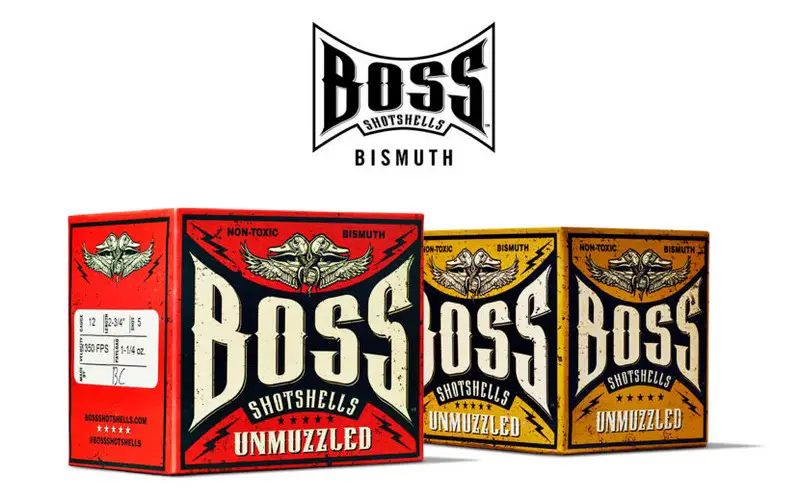
Boss shells are available direct: https://bossshotshells.com/products/2-3-4-magnum-1-1-4-oz-4-1350fps/?sku=SKU-FDBE8F2D . That's $240 for 200 shells, or $1.20 per round.
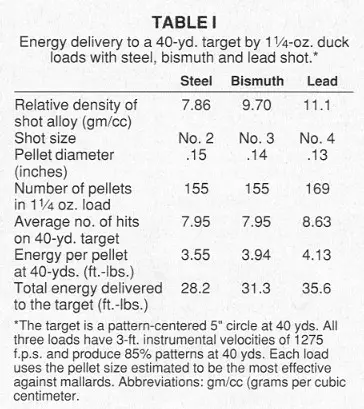
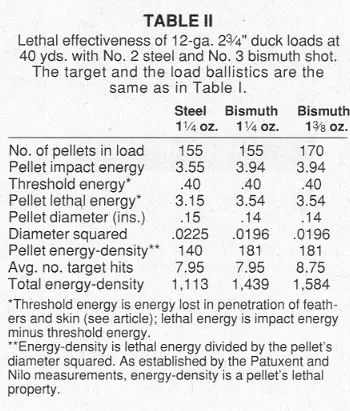
The Ed Lowry tables above show how steel #2, bismuth #3, and lead #4 compare at 40 yards.
If you want 1.5 inches of penetration on a pheasant, you're limited to 40 yards and in with #5 bismuth. That isn't much comfort when a nervous rooster hits the air at 35 yards to start with. #4 bismuth gets you 1.5 inches of penetration at 49.7 yards and seems to be the best compromise with 1-1/4 loads, for the patterns with #3 bismuth are too thin at 50 yards. Bismuth #3 doesn't offer the 56.9 yard 1.5 inch penetration of #5 lead.
Compared to #2 steel, bismuth #4 gives you more pellets (close to 40) and better penetration at all ranges. It makes steel for pheasants and mallards obsolete. Bismuth has other advantages as well: safe for "lead only" barrels and choke tubes, and bismuth cannot scratch forcing cones or puff out barrels as steel has done. While dentists prefer that you shoot steel, bismuth is better in every way that matters.
Copyright 2020 by Randy Wakeman. All Rights Reserved.









